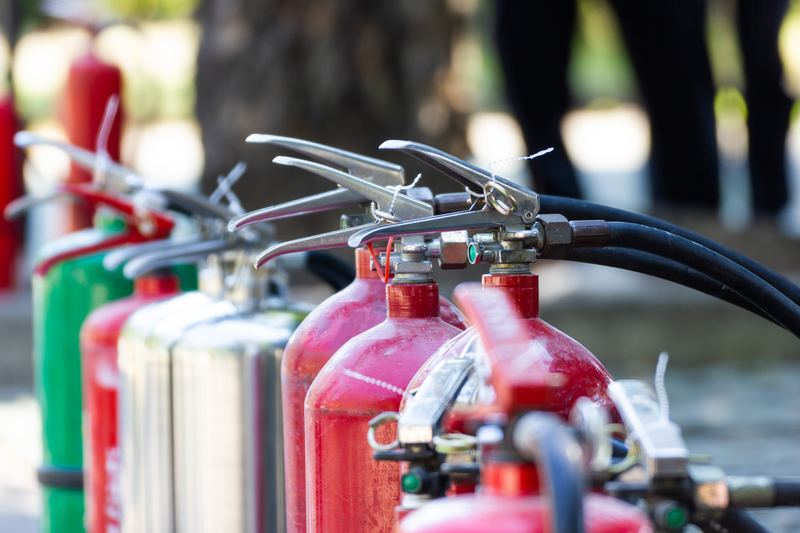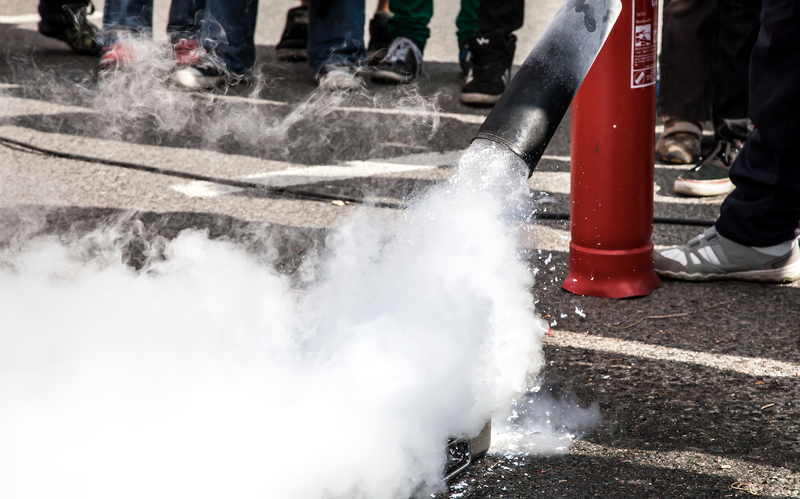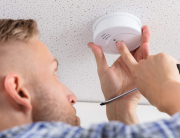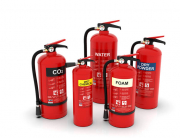A fire extinguisher can be considered the first automatic portable fire fighting tool. Most of us know about the existence of fire extinguishers, but only 20% know how to use them properly.
What are the most common types of fire extinguishers?
Carbon dioxide fire extinguishers
This type of fire extinguisher is designed to extinguish the fire caused by electrical installations with a voltage up to 10,000 V (10 kV), internal combustion engines, flammable liquids. Never use it on materials that burn without access to air.
The principle of operation is based on the displacement of carbon dioxide by excessive pressure. Carbon dioxide isolates burning material from oxygen. Another important feature of these fire extinguishers is its ability to cause a strong decrease in temperature.
The verification of this type of fire extinguishers should be done once a year, and recharge every 5 years.
Foam Fire Extinguishers
This type is designed to extinguish fires of solid materials, flammable liquids, as well as electrical installations without voltage. It cannot be used with alkali metals and substances that burn without access to air.
Chemical fire extinguisher
When the device is activated, the valve opens, freeing the acid part of the extinguishing agent. When you shake the fire extinguisher, the acid part interacts with the alkali one. The resulting foam then flies out the nozzle to the fire.
Air foam fire extinguisher
The foaming agent solution is displaced by excessive gas pressure (air, nitrogen or carbon dioxide). The foaming agent is squeezed out through the siphon tube, then it is mixed with the air in the nozzle, forming a foam. When it gets on a burning substance, the foam cools it and isolates it from oxygen.
The chemical foam fire extinguisher must be charged every year, regardless of whether it was used or not.
Powder Extinguishers
They are designed to extinguish fires of petroleum products, solvents, solids, as well as electrical installations with the voltage up to 1000 V (1 kV).
When you use this fire extinguisher, the plug of the working gas tank (carbon dioxide and nitrogen) is pierced. Gas enters the lower part of the fire extinguisher’s body and creates excess pressure. The gas displaces powder to the siphon tube, and by pulling the trigger you can adjust the amount of powder that is released. When the powder gets to the source of fire, it will then isolate the substance from oxygen and stop the fire.
Before extinguishing, make sure that there are no twists or kinks in the fire extinguisher hose. When you finished, make sure that the fire has been liquidated and the fire will not start again.
Automatic fire extinguisher
Automatic extinguishers are designed to stop small fires of solid organic substances, melting materials, electrical installations with the voltage up to 1000V. When the temperature of the surface is high enough, the powder tank explodes, covering the place of the fire. This type of fire extinguishers is good for business fire safety, for example in stores or warehouses.
Thank you for reading this blog post, we hope you have learnt more about the different types of fire extinguishers. If you have any queries or wish to contact us, visit our contact page or call us on 01604 760 600.







